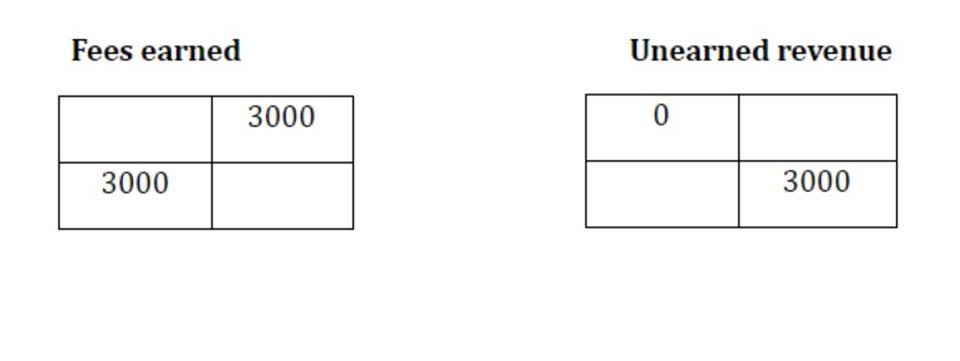Content

The Occupational Employment and Wage Statistics program produces employment and wage estimates annually for over 800 occupations. These estimates are available for the nation as a whole, for individual states, and for metropolitan and nonmetropolitan areas. The link below go to OEWS data maps for employment and wages by state and area. According to a survey conducted by Robert Half, 54% of CFO-s claimed to value soft skills and hard skills equally, while 36% of them said they put greater importance on technical skills. Although, the technical skills have better performance if they are done by a person with a great set of soft skills. Soft skills may be of help in overall job performance, but without the technical side of it, doing or even getting the job would prove impossible.
- The Big Four auditors are the largest employers of accountants worldwide.
- We are looking for an Accountant to manage all financial transactions, from fixed payments and variable expenses to bank deposits and budgets.
- Cultural competency is essential to respect people’s differences abroad.
- To learn more about this, and other bachelor’s degree programs that can propel your accounting career, explore our program pages.
Accountants work with individuals or organizations, handling monetary transactions by recording financial information. Their job may also include financial analyzing and reporting, preparing tax returns, auditing accounts, and/or acting as consultants on a wide variety of financial matters. A certified public accountant is a designation given to those who meet education and experience requirements and pass an exam. An accountant is a professional who is responsible for keeping and interpreting financial records.
Accountingtools
They identify ways to improve the processes for finding and eliminating waste, fraud, and other financial risks to the organization. The practice of internal auditing is not regulated, but the Institute of Internal Auditors provides generally accepted standards. An Accountant helps businesses make critical financial decisions by collecting, tracking, and correcting the company’s finances. They are responsible for financial audits, reconciling bank statements, and ensuring financial records are accurate throughout the year. CPAs are certified through the state through specific examinations and licensing requirements.
In just 5 minutes, we’ll get to know you, your business, and the kind of help you’re looking for. Recommending and reviewing compensation, benefits, assets, and spending of company money. Developing, updating, and maintaining accounting policies and procedures, such as monitoring and reporting. When a company is at risk of collapsing or in financial trouble, several stakeholders may… Candidate engagement is the process of communication between the job seeker and the recruiter and… Relevant and crucial information is tracked for the management of the company to be able to make strategic decisions. Founded in 1932, and online since 1995, we’ve helped countless students reach their goals with flexible, career-focused programs.
Check Out All The Free Career Tests
An accountant can be anything from a simple bookkeeper to a strategic adviser, interpreting financial information for senior decisions makers in the business. Harold Averkamp has worked as a university accounting instructor, accountant, and consultant for more than 25 years.
- It’s possible that they may oversee a corporation or business’s entire accountancy needs.
- This is better than the 7 percent growth projected for all occupations.
- Management accountants are also called cost, corporate, industrial, managerial, or private accountants.
- There are plenty of other jobs with a similarly narrow scope, but if you are a person who likes to do a variety of work, then accounting probably isn’t a great fit.
Those who excel may become supervisors, managers, or partners; open their own public accounting firm; or transfer to executive positions in management accounting or internal auditing in private firms. External auditors check for proper management of an organization’s funds, sources of revenue, and internal controls, such as financial data preparation or managing risks to cybersecurity or the supply chain. They are employed by an outside organization, rather than the one they are auditing. They review clients’ financial statements and inform authorities, investors, and regulators that the statements have been correctly prepared and reported with no material misstatements. Many interested in the field of accounting eventually do become CPAs. They earn the CPA designation after completing specific educational and work requirements, and passing an exam. An accountant without the CPA designation cannot do any of these things.
Requirements And Skills
While bookkeepers are skilled at handling plenty of financial responsibilities, they’re not required to hold licenses that allow them to represent you to the IRS or prepare your taxes. Auditors examine financial statements, accounting systems, and other financial and fiscal records. Informally, we say they ‘check the books‘ to make sure everything is in order.

And getting an accounting degree does not require someone to be a math genius. It does, however, require a hefty amount of creative problem solving and providing goal-oriented plans. Ultimately, you will provide us with accurate quantitative information on financial position, liquidity and cash flows of our business, while ensuring we’re compliant with all tax regulations. Keeps track of the company’s money, including all the expenses it makes, as well as its earnings, on a daily basis. The data is very important because, when compiled into reports, they describe the fiscal health of the company, and errors can lead to poor reporting and bad decisions.
When To Use An Accountant
Their responsibilities include auditing, financial reporting, and management accounting. Accountants help businesses maintain accurate and timely records of their finances. Accountants also provide other services, such as performing periodic audits or preparing ad-hoc management reports. An accountant is an individual who performs accounting tasks for individuals or companies. An accountant is one of the primary figures in a business that he or she works for, whether it is a multinational corporation or a small family owned business. Requirements to become an accountant vary upon specialization and nation, but generally include certification through a professional agency and a basic college degree in accounting and finance. Management accountants prepare financial information that is used internally by the companies that employ them.

Another option is the certified management accountant designation, which is targeted at improving the management accounting and financial accounting skills of accountants. The Certified Internal Auditor designation is intended for those who work on auditing tasks within a business. Since CAs tend to work overseas, it’s important for them to have professional connections in foreign countries. Some CAs work in American accounting firms preparing tax documents and filing tax returns for corporations that conduct international business. Job opportunities for American chartered accountants are limited, so most certified accountants in the US work as certified public accountants. In foreign countries such as India and New Zealand, CAs play the role of CPAs.
Accountant Salary
All of this would, for the most part, involve a lot of critical thinking and strategizing solutions, which are the end product https://www.bookstime.com/ of an accounting job. Every prospective accountant should work on perfecting it because it is the very essence of their job.
There are links in the left-hand side menu to compare occupational employment by state and occupational wages by local area or metro area. The continued globalization of business may lead to increased demand for accounting expertise and services related to international trade and international mergers and acquisitions.
How To Become An Accountant
A common misconception is that you have to be good at math to be an accountant. It is true that math skills are important in order to analyze, compare, and interpret data and figures; however, complex mathematical skills aren’t typically necessary to become an accountant.
This post is to be used for informational purposes only and does not constitute legal, business, or tax advice. Each person should consult his or her own attorney, business advisor, or tax advisor with respect to matters referenced in this post. Bench assumes no liability for actions taken in reliance upon the information contained herein. If your business owes debts to a variety of sources, like credit cards, loans, and accounts payable, you’ll have to jump into multiple accounts to check what you’re left owing. The balance sheet tells you how much of your AR you’ve already pocketed during the month and how much is still outstanding. You may not be planning to court investors or sell your business right now, but it’s a good idea to leave your options open.

But there is one requirement that is uniform in every state—the passing of the Uniform Certified Public Accountant Examination. This is an exam that is written and graded by the American Institute of Certified Public Accountants . Managerial accounting is the practice of analyzing and communicating financial data to managers, who use the information to make business decisions. Investopedia requires writers to use primary sources to support their work. These include white papers, government data, original reporting, and interviews with industry experts. We also reference original research from other reputable publishers where appropriate.
Other Examples Of Accounting
If those are tips your business can benefit from right now, it might be time to hire an accountant. Potential investors, stakeholders, What Is an Accountant or buyers will expect accounting records vetted by a CPA that prove your business is profitable and on track for growth.
Business Knowledge
Though the requirements to become a CPA vary by state, the CPA exam is the same for everyone. Learn more about a career in accounting and the CPA exam on the American Institute of CPAs website.
Accountant Job Description
Although some of the information comes from recorded transactions, many of the analyses and reports include estimated and projected amounts based on various assumptions. Generally, this information is not distributed to people outside of the company’s management. A few examples of this information are budgets, standards for controlling operations, and estimating selling prices when quoting prices for new work. Public accountants, many of whom are Certified Public Accountants , generally have their own businesses or work for public accounting firms.


